Extending Home Networks - A Comparison of G.hn, HomePlug AV2 and Wi-Fi Mesh
by Ganesh T S on December 7, 2016 8:00 AM ESTPLC Performance: ARRIS SBX-1000P (G.hn) vs. D-Link DHP-P701AV (HomePlug AV2)
The ARRIS SBX-1000P is a wired network extender based on G.hn technology. It is meant to be used in conjunction with a RipCurrent router such as the SBR-AC1900P. The aspect that differentiates the SBR-AC1900P from other AC1900 routers is the integration of a G.hn PLC chipset inside the router itself. Otherwise the design is a standard Broadcom-based AC1900 router (Broadcom BCM4709A as the SoC and the Broadcom BCM4360 for the 3x3:3 an+ac / bgn 5 GHz and 2.4 GHz radios). The G.hn PLC chipset is from Marvell - the 88LX3142 for the digital baseband and the 88LX2718 for the analog front end.
The SBX-1000P is a simple PLC node with a single Ethernet port. It uses the same Marvell platform as the G.hn segment of the SBR-AC1900P. Similar to the Comtrend PG-9172 that we reviewed earlier, it comes with MIMO support and G.hn / HPAV co-existence technology.
The D-Link DHP-P701AV is an AV2 2000-class HomePlug AV2-compliant PLC kit. It uses the Broadcom BCM60500 chipset. It earns the AV2 2000 designation, thanks to its MIMO capabilities and the use of the full possible spectrum allowed by HomePlug AV2 - 2 to 86 MHz.
Note that this kit is meant to be used in conjunction with a regular router. There are products such as the Nighthawk DST in the market that combine the router and PLC chipset in a single unit (like the ARRIS kit we just discussed above). However, the Nighthawk DST uses a cheaper SISO version of the Broadcom chipset that is only AV750-class.
In any case, we are going to compared wired backhaul over power lines using the best possible products that G.hn and HomePlug AV2 currently have in the market. The graphs below shows the TCP and UDP downlink and uplink speeds across the six different locations in our test setup.
In almost all cases (except for a few UDP ones), the HomePlug AV2 2000-class D-Link DHP-P701AV delivers better throughput. This is in contrast to the previous review of the Comtrend PG-9172, where the G.hn kit could hold its own against the AV2 1200 products. The upcoming generation of G.hn chipsets promises better performance - it remains to be seen if that makes G.hn achieve performance parity with HomePlug AV2 in our particular test setup.


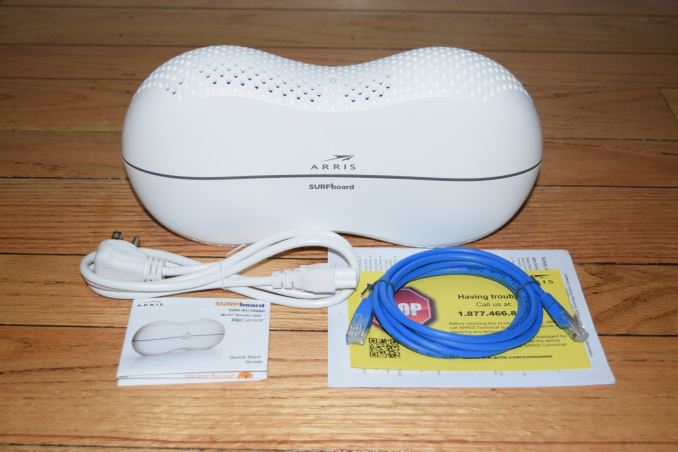

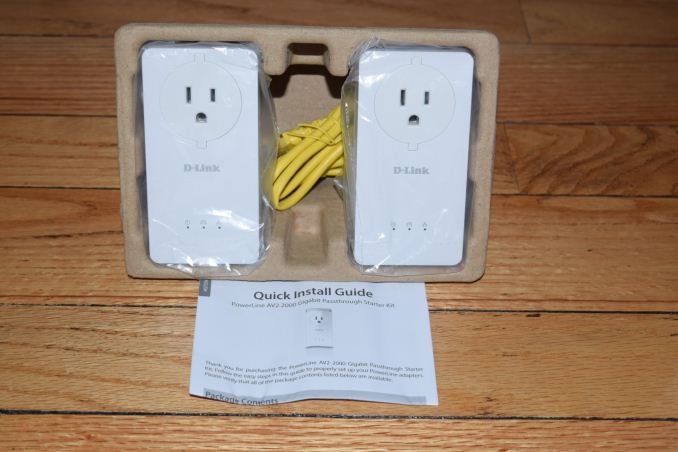
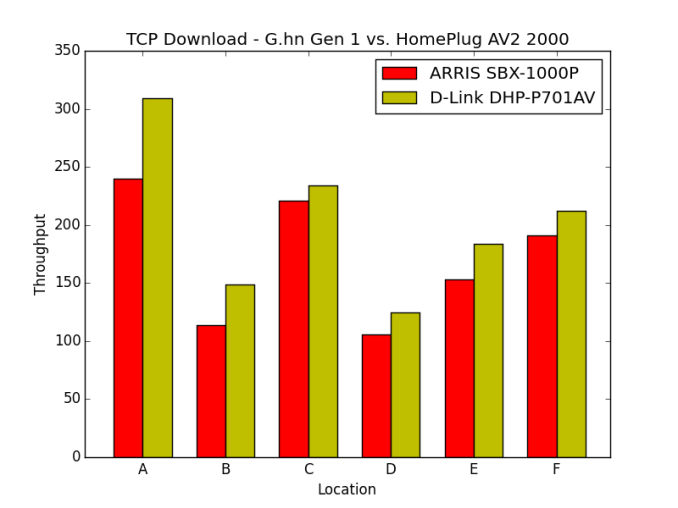
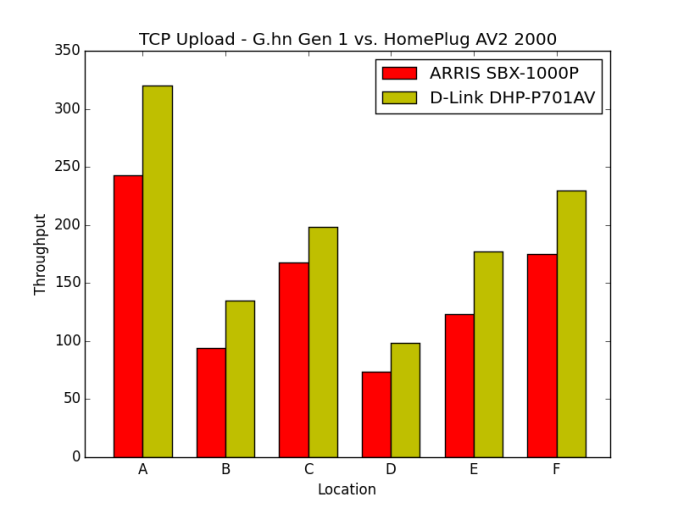
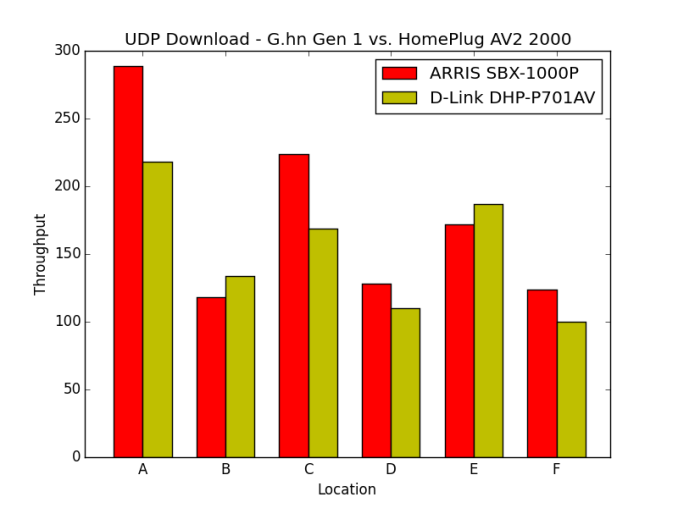
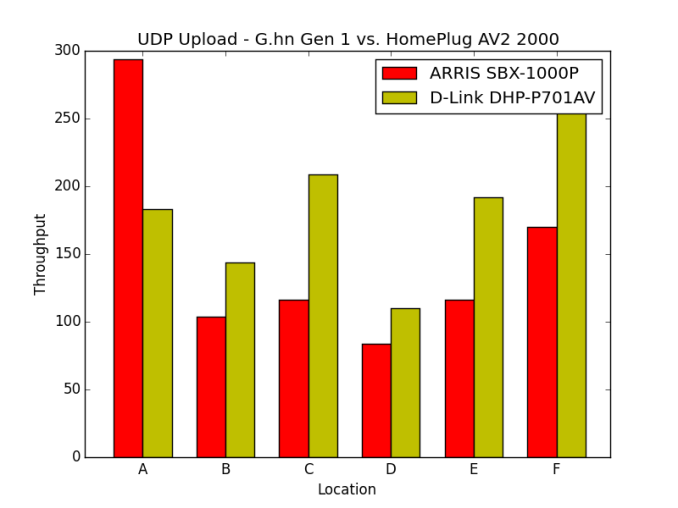








56 Comments
View All Comments
tibble - Wednesday, December 7, 2016 - link
Hub and Spoke IS NOT MESHganeshts - Wednesday, December 7, 2016 - link
The current 'mesh Wi-Fi' market is basically a primary router along with 1 or more extra units that expand the reach of the wireless network. That doesn't, unfortunately, correspond to the traditional definition of 'mesh networking'.Orbi is sold into the same market space as that of Luma and eero. That is why I go to great lengths to explain the 'hub and spoke' model of the Orbi as a type of 'mesh Wi-Fi' configuration, rather than a 'mesh networking' configuration. In the latter space, the hub and spoke configuration is referred to as a 'point-to-multipoint' topology.
wchpitt - Monday, January 2, 2017 - link
Good to see this mentioned. Orbi is NOT "mesh". That being said when a single hop will do to meet your coverage needs the Orbi Point to multipoint configuration has the speed race won hands down. But when you need true mesh (two or more hops and multipoint) then eero is still the current leader in performance and Google in price. I use the Orbi at home, but eero at my business where I need multihop functionality of true mesh.hp79 - Wednesday, December 7, 2016 - link
What about the ping? By going wireless, doesn't that add additional and noticeable lag especially if you are playing FPS games? Throughput looks really nice for the Orbi.mrseanpaul81 - Wednesday, December 7, 2016 - link
It's a shame the Google WiFi hardware was not included since it seems like a different implementation from the Netgear orbi.SGTGimpy - Wednesday, December 7, 2016 - link
I saw a few people mention Ubiquiti AP's (Which I personal use and love). They are not that best for most people to configure unless you have a good understanding of RF signal tuning. As another choice for those who would like the power of the Ubiquiti systems but the simple setup of a home router. Check out https://www.amplifi.com/. This is Ubiquiti's new home solution company and there Amplifi HD unit has been getting great reviews.meacupla - Wednesday, December 7, 2016 - link
What about long term reliability?I've had several trendnet powerline units fail on me after a year or two of use.
They worked great at the start, but they seem to deteriorate and flake out eventually.
Dug - Wednesday, December 7, 2016 - link
I personally went with Actiontec MoCA 2.0. In my testing it is much faster and more reliable than any powerline solution. I understand people may not have coax going to where they want, but if you do, it is a far superior solution. No issue streaming blu-ray's in any part of the house.Threska - Sunday, December 11, 2016 - link
I use to have a MoCA setup. Unfortunately Actiontec isn't all the best, and doesn't do too well once one gets past a certain number of units (configuration was a pain too). It did better with the Motorola units, but MoCA is rather expensive compared to the other tech out there.greg_mitch - Monday, January 2, 2017 - link
My cable company/ISP provided me Actiontec 1.0 MoCa adapters free of charge during an internet connectivity trouble call on-site. He said they give them out like splitters to make people who are complaining about internet connectivity at home for free all the time. I got three from him.MoCa is pretty slick, but there is no substitute for great Wifi as many devices are eliminating the ehternet jack altogether (Chromecast, Smart TV, laptops, etc.).